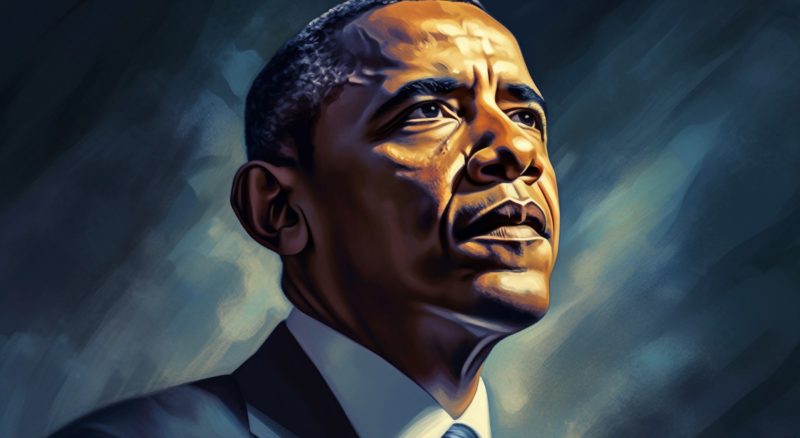
An individual who had been involved in the previous unrest on Jan 6th, was apprehended in close proximity to the residence of ex-President Barack Obama, based in Washington D.C. Identified as 37-year-old Taylor Taranto from Washington state.
He was found in possession of firearms and ammunition in his vehicle and had previously made threats to detonate his van at a government institution. This information was brought to light in recent federal court documents.
Taranto was apprehended in the Kalorama neighborhood, not far from the Obama residence on June 29, after being detected by Secret Service agents. His arrest was made in connection with his supposed participation in the events of Jan 6, leading to him facing four misdemeanor charges relating to the insurrection. Federal prosecutors have hinted at potential supplementary charges.
In the hearing regarding Taranto’s continued detainment during the trial period, Magistrate Judge Zia Faruqui stated on Wednesday evening that additional arguments and case studies are required to make a ruling on the request of the prosecutors. Taranto’s legal counsel was adamantly opposed to the conclusions drawn by the prosecutors, arguing that Taranto was not a flight risk and should be granted release.
Ahead of Thursday’s continuation of the hearing, a memo from the government was shared, revealing further findings from their investigation into Taranto. The document requested that the judge ensure Taranto’s continued detention during his trial.
On June 28, Taranto was live-streaming on his public YouTube channel, during which he mentioned that he was on his way to the National Institute of Standards and Technology (NIST), an agency part of the Commerce Department situated in Gaithersburg, Maryland, equipped with a detonator.
Prosecutors stated that Taranto made a series of comments that suggested his intent to detonate his vehicle at NIST. These included claims that he possessed a detonator, was on a ‘suicide mission’, and the vehicle was autonomous, allowing him to be far from the blast site. This alarming information led the FBI to initiate a search for Taranto.
As a participant in the Capitol unrest on Jan 6, Taranto had been under the FBI’s online surveillance. On the following day, an arrest warrant was issued by a federal judge in Washington D.C. for his participation in the January 6th unrest. Shortly after this, Taranto commenced another live stream from his van, revealing that he was on a road in the Obamas’ neighborhood.
His live stream included disconcerting comments regarding his awareness of the residences around him, his ‘control’ over the neighborhood, and his intention to locate the ‘tunnels beneath their homes’. His arrest was made after a brief chase when Secret Service agents attempted to apprehend him.
An inspection of Taranto’s van revealed the presence of gunpowder detected by a K9 unit from the Metropolitan Police Department and an FBI bomb squad. Further inspection led to the discovery of two firearms and hundreds of nine-millimeter ammunition rounds, along with a machete.
Prosecutors stated that Taranto had relocated cross-country around two months ago and had been residing in his van. He was a regular presence outside the D.C. jail, which houses many other January 6 defendants, until he was prohibited from the vicinity by other protestors.
Taranto’s online activity since the riot reveals his regular commentary on his presence at the Capitol. Moreover, prosecutors also accuse him of making threats towards Congressional members, including Democratic Representative Jamie Raskin of Maryland and House Speaker Kevin McCarthy.
The charges brought against Taranto include entering an elementary school in Takoma Park, Maryland, on June 18. Here, Taranto and his companions toured the school, using a projector in the gymnasium to display a film relating to January 6. He specifically chose this school due to its proximity to Congressman Raskin’s residence, viewing it as a symbolic act against Raskin’s disapproval of Trump supporters and those involved in the January 6 incident.
Given Taranto’s vehement anti-government stance and publicly aired threats against political figures and government property, prosecutors argued for his continued detention, questioning his ability to comply with conditions ensuring community safety and his court appearances.
During Wednesday’s court session, the depth of the investigation into Taranto, active since the Capitol insurrection, was reiterated by prosecutors. They portrayed him as a figure increasingly making erratic public statements, culminating in the necessity of active surveillance of his online activity.
The hearing grappled with balancing Taranto’s risk of flight, deemed relatively low by the judge, against his recent unsettling behavior. Further complexity was added to the case by discussions of Taranto’s mental health history, which includes treatment for PTSD stemming from his service in the Iraq War.
His defense attorney, Katherine Guevara, asserted the constitutional protection of Taranto’s activities. She argued that his rhetoric, while excessive and designed to draw attention, hadn’t led to any actual wrongdoing. Guevara emphasized Taranto’s visibility during his prolonged stay in D.C. and his uneventful attendance of a Jan. 6-related sentencing, casting doubt on the Justice Department’s sudden depiction of him as a risk.
The judge is set to hear further arguments on Thursday, possibly from Taranto’s wife, before making a ruling.
